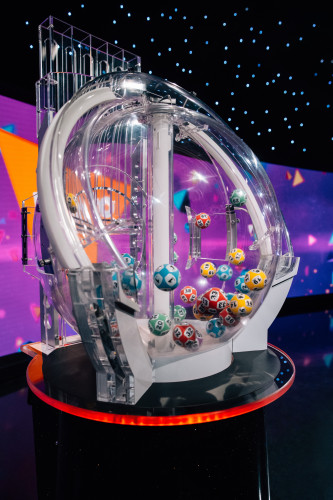Procuring lucky numbers and the machine that runs them
There are no suppliers of goods and services specific to lotteries based in New Zealand. So, the Lotto procurement team sources what they need from international suppliers.

One of the 6 Lotto machines in action. Photo: Lotto
Every week thousands of New Zealanders take a punt.
The Lotto balls take just a handful of seconds to settle and then, generally speaking, someone’s life is changed forever, says Lotto Procurement Manager Jason Cocker.
It’s an “incredible thing” to be part of, Jason said.
“Being involved in procurement at Lotto NZ has been extremely rewarding. For both our internal team and external partners, it is a chance to contribute to the magic and a piece of New Zealand’s history.”
There are no suppliers of goods and services specific to lotteries based in New Zealand. So, the procurement team sources what they need from international suppliers.
“We are the only National Lottery operator in New Zealand. Being located far from suppliers presents logistical and operational risks. A great example of this is the procurement of the equipment required for our live draws.”
“To manage this, we procure multiple machines and ball sets to ensure continuity. And at the same time support Audit NZ-approved processes for randomness and redundancy.
“Our suppliers commit to providing spare parts over the machines’ lifespan. They also enable local maintenance through documented instructions and thorough training.”
A pool of 6 draw machines is maintained. There are 4 in active rotation, selected via coin toss on draw nights, and 2 held as contingency.
There are 4 sets of balls. They are rotated for fairness and regularly assessed through a precision-based measurement system. This verifies each ball meets the manufacturer specifications and is fit for use.
Once a set of balls has been used a maximum of 10 times, a process is run to ensure the balls still meet the manufacturer’s specifications.
As part of this, the balls are cleaned, weighed, and inspected by a Lotto NZ representative under Audit NZ scrutiny.
“Should a single ball not meet the required specifications during this process, the entire set gets replaced.
The ball sets are made from EVA polymer, a durable and lightweight Ethylene-Vinyl Acetate material,” said Jason.
The procurement process follows rigorous standards for quality, randomness, and operational resilience.
"The procurement work goes beyond simple sourcing. It's about ensuring excitement, transparency, and trust in every draw.
“We can’t afford to lose trust in the system. So, when it comes to our procurement planning, we have that at the very top as our guide,” he said.
Other key considerations include: the visual transparency of the machines - viewers should be confident there is no human interference in the televised draw. Any changes to the new machines must be easy for the production team to incorporate into the broadcast. And the technology must replicate, and where possible, improve the high standard of integrity of the current or previous draw machine.